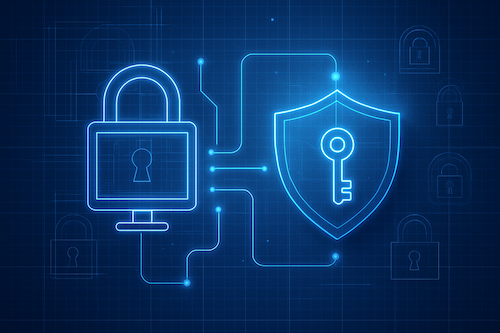
Table of Contents
In today’s hyper-connected enterprise landscape, the keys to the kingdom (privileged accounts) remain prime targets for malicious actors. Securing these credentials isn’t just an IT task; it’s a fundamental strategic imperative. My observations from numerous complex system environments consistently highlight that robust Privileged Access Management (PAM) is a cornerstone of resilient cybersecurity. Among the prominent solutions in this domain, CyberArk has carved out a significant presence. But what makes its approach compelling for modern enterprises?
The challenge with privileged accounts is their pervasive nature and the extensive access they grant. These accounts, if compromised, can lead to catastrophic breaches. Traditional security measures often fall short in addressing the nuanced risks associated with these credentials. It’s a domain where an ounce of prevention, or rather strategic control, is worth far more than a pound of cure. A perspective forged through years of navigating real-world enterprise security challenges suggests that a dedicated, comprehensive PAM strategy is non-negotiable.
Core Pillars of CyberArk’s Approach
CyberArk’s strategy appears to revolve around a multi-layered defense for privileged credentials and access pathways. From my analysis of market offerings and enterprise needs, several core components stand out:
Secure Credential Vaulting and Management forms the foundation. At its heart, a PAM solution must securely store and manage privileged passwords, SSH keys, and other secrets. CyberArk’s emphasis here is on automated rotation and controlled access, which field-tested perspectives confirm are critical for reducing standing privileges. The vault architecture provides centralized control while maintaining the flexibility needed for diverse enterprise environments.
Session Isolation and Monitoring extends beyond credential management. Monitoring what happens during privileged sessions is vital. The ability to isolate, record, and audit these sessions provides not only a deterrent but also invaluable forensic capabilities. This becomes particularly crucial when investigating potential security incidents or demonstrating compliance during audits.
Least Privilege Enforcement represents a long-standing security principle that CyberArk helps operationalize. Enforcing least privilege on endpoints and applications is crucial. Solutions that extend PAM to the endpoint can significantly reduce the attack surface if an initial compromise occurs. This approach transforms theoretical security policies into practical, enforceable controls.
Threat Analytics elevates PAM from passive defense to active protection. Detecting anomalous behavior associated with privileged account usage is increasingly important. Integrating analytics to identify potential misuse or compromised credentials in real-time shifts the security posture from reactive to proactive threat detection.
Strategic Implications for the Enterprise
Deploying a robust PAM solution like CyberArk isn’t merely an operational upgrade; it has profound strategic implications. Insights distilled from observing enterprise security evolutions indicate several key benefits that extend far beyond technical implementation.
The most immediate impact is a demonstrable strengthening of an organization’s overall security posture by drastically reducing the risk associated with compromised privileged accounts. This isn’t just theoretical protection. It’s measurable risk reduction that can be quantified and communicated to executive leadership. The ripple effects touch every aspect of enterprise operations, from daily IT workflows to long-term strategic planning.
Regulatory compliance represents another critical dimension. PAM solutions are instrumental in meeting stringent compliance mandates (think SOX, HIPAA, PCI DSS) which often explicitly require controls around privileged access. The audit trail capabilities and automated controls help organizations demonstrate compliance rather than simply claiming it. This shifts compliance from a burden to a competitive advantage.
Operational efficiency gains often surprise organizations during implementation. By automating credential management and streamlining access workflows, PAM can yield significant efficiencies, freeing up security and IT teams from manual, error-prone tasks. The time savings compound over months and years, allowing teams to focus on strategic initiatives rather than routine credential management.
Implementation Realities and Considerations
However, the journey isn’t without its complexities. The successful adoption of comprehensive PAM often requires a cultural shift towards security awareness and policy adherence. Defining clear ownership, robust policies, and integrating the PAM solution into existing IT and security workflows are critical success factors. It’s not just about the technology, but how it’s woven into the fabric of an organization’s operations and security culture.
Many organizations also find that the initial discovery and onboarding of myriad privileged accounts can be a more substantial undertaking than initially anticipated. The process reveals the true scope of privileged access across the enterprise, often surprising stakeholders with the sheer number of accounts requiring management. This discovery phase, while challenging, provides valuable visibility into the organization’s actual security posture.
Change management becomes particularly crucial during PAM implementation. Users accustomed to direct access to privileged accounts may initially resist the additional controls and workflows. Success depends on clear communication about the security benefits and providing adequate training to ensure smooth adoption.
Future-Proofing Enterprise Security
Looking ahead, the role of PAM is set to become even more central, especially as enterprises embrace Zero Trust architectures, where verifying every access request, regardless of origin, is paramount. Solutions like CyberArk are well-positioned to be key enablers in such frameworks. The integration capabilities and comprehensive approach align naturally with Zero Trust principles.
The evolution toward cloud-native architectures and hybrid environments also amplifies PAM’s importance. Managing privileged access across on-premises systems, multiple cloud platforms, and hybrid configurations requires sophisticated orchestration that dedicated PAM solutions provide. This complexity will only increase as organizations continue their digital transformation journeys.
What are your organization’s biggest challenges in managing privileged access? I welcome your perspectives and discussions on LinkedIn.